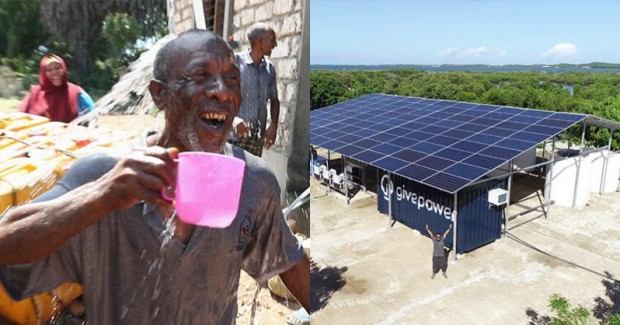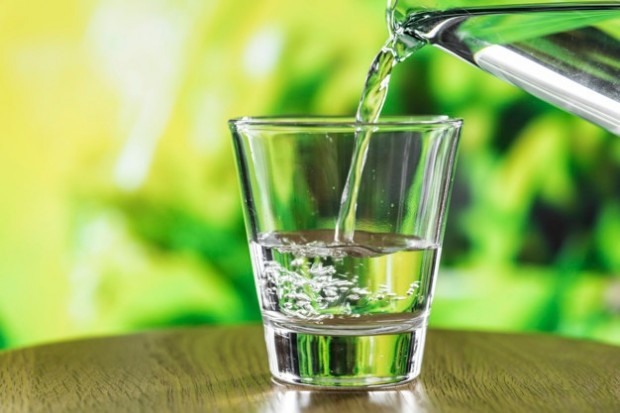Kenya's first solar plant turns ocean water into drinking water
71% of world consists of water. However, world being a watery place isn’t enough for everyone to be able to access drinking water, which is what about 785 million people are lack of. 96.5% of the water sources of our planet is from the oceans which is saline water and the kind that humans can’t drink. To satisfy our drinking water needs, there are rivers, lakes and groundwater.

The World Economic Forum published that among the most risky global crisis, water ranks as the fourth. Humans will always need water for their survival. A person from the United States or Canada might not be able to comprehend the water crisis since they can turn on the tap and reach safe drinking water any time they want. For billions of other people from different corners of the world, it is beyond reach. However, there’s a NGO that tries to change it.

GivePower
Give Power is an organization providing solar energy technologies for basic services in developing countries who are in need. The last project they achieved was installation of a solar-powered desalination system in Kiunga, a rural region of Kenya, for the locals to reach clean and healthy water. .

With the help of this equipment, saline ocean water is now going to be a reliable supply of water for people of Kiunga. This technology is capable of providing around 70 thousand liters of drinking water per day, which is adequate for up to 35 thousand people

The World Health Organization announced a report showing that about 2.2 billion of people can’t reach health, safe and clean water supplies, 4.2 billion of people don’t have access for sanitation services and 3 thousand million people can’t have access for water even to wash their hands which means that even if some people do have access to safe water, there’s a chance that he can’t drink it as it’s not clean enough, especially in rural lands and among poor communities. This life changing project is a new start for 785 million people mentioned above.

Desalination is a procedure in which salts and other minerals are extracted from the water and, to achieve this, you have to push the water through a filter. The problem is that every solution (including water) wants to remain balanced. It inherently needs equivalent quantities of water, salt, and minerals on either side of the filter or membrane, which is named as osmotic pressure. The process of separating salt and minerals from the water, takes an enormous energy.

The usual desalination methods often involve significant quantities of chemicals, including pH-adjusters, coagulants and flocculants, deposition management agents (antiscalants, dispersants), biocides and chemicals-reducing agents. In the process of post-treatment, chemicals need to have chlorine, corrosion inhibitors and remineralizing compounds. GivePower’s new technology named “solar water farms” is a solution for these issues. This system generated fifty kilowatts of electricity by using solar panels. Two high-performance Tesla batteries are used to store the energy and also there are two water pumps 7 24 operating. The consistency of the water it provides is greater than that of a conventional desalination plant and does not contain salt particles and toxins that are toxic to animals and the ecosystem.

Before installation of this new technology of solar-powered desalination system, locals in Kiunga had to be stranded on the road for an hour to have access to water. That was the unhealthy water that animals used for bathing and people from Kiunga had to use it both for drink and bathe and to wash their things which was sort of a poison for the families. Today, 3500 people of Kiunga have access to clean, safe and fresh water through their faucets.

Water Access Equal For Everyone
After Kiunga, GivePower installed more systems to relieve fresh water for other regions in need. They have planted around 2.500 systems of solar panels in seventeen countries and also are running a fund-raising campaign to build more. In the future, there won’t be a single person who can’t reach safe water.

